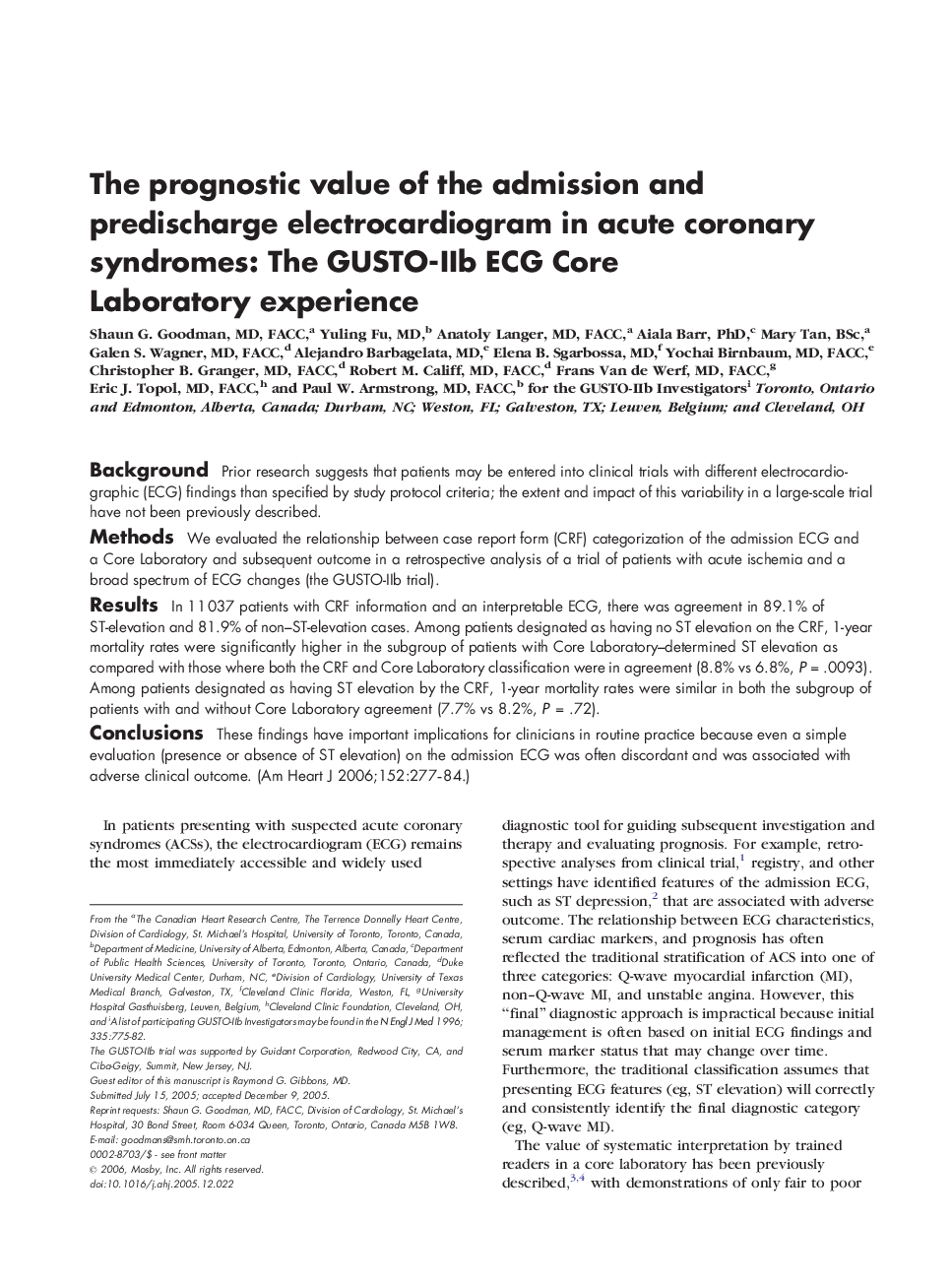| Article ID | Journal | Published Year | Pages | File Type |
|---|---|---|---|---|
| 2849274 | American Heart Journal | 2006 | 8 Pages |
BackgroundPrior research suggests that patients may be entered into clinical trials with different electrocardiographic (ECG) findings than specified by study protocol criteria; the extent and impact of this variability in a large-scale trial have not been previously described.MethodsWe evaluated the relationship between case report form (CRF) categorization of the admission ECG and a Core Laboratory and subsequent outcome in a retrospective analysis of a trial of patients with acute ischemia and a broad spectrum of ECG changes (the GUSTO-IIb trial).ResultsIn 11 037 patients with CRF information and an interpretable ECG, there was agreement in 89.1% of ST-elevation and 81.9% of non–ST-elevation cases. Among patients designated as having no ST elevation on the CRF, 1-year mortality rates were significantly higher in the subgroup of patients with Core Laboratory–determined ST elevation as compared with those where both the CRF and Core Laboratory classification were in agreement (8.8% vs 6.8%, P = .0093). Among patients designated as having ST elevation by the CRF, 1-year mortality rates were similar in both the subgroup of patients with and without Core Laboratory agreement (7.7% vs 8.2%, P = .72).ConclusionsThese findings have important implications for clinicians in routine practice because even a simple evaluation (presence or absence of ST elevation) on the admission ECG was often discordant and was associated with adverse clinical outcome.
